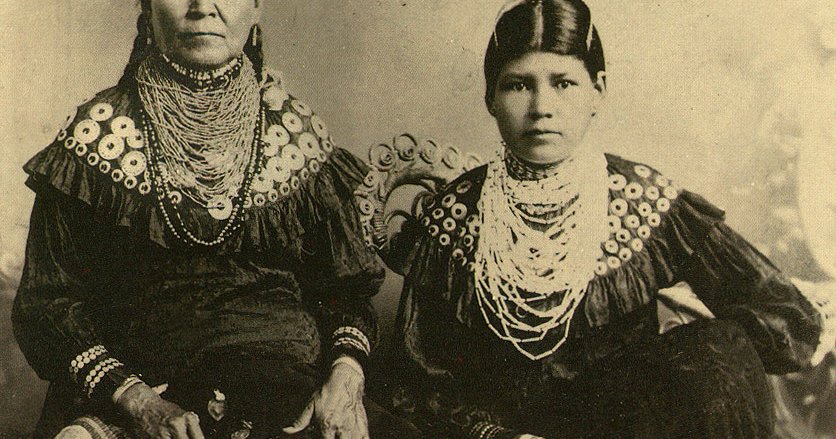Delaware
New book explores folklore from the Delaware Valley’s first people

According to Indigenous folklore, Earth began on the back of a giant turtle. The creation story often begins with a woman falling from the sky, hurtling toward a watery grave. Animals spot her descent and intervene to save her life. She lands on the back of a turtle, packed with mud to form solid ground, and once she gives birth, a new world is born.
While versions of this tale appear in many different cultures, the Lenape have been telling it for at least hundreds, if not thousands, of years. Also known as the Delaware, these Indigenous Americans inhabited land on both sides of the Delaware River long before English settlers arrived.
William Penn signed a peace treaty with the Lenape one year after he established the colony of Pennsylvania in 1681, as memorialized in a painting, but subsequent colonists pushed the Lenape across the country to Oklahoma. Though many settled there permanently, Lenape influences are still felt all over the state and in the city of Philadelphia, in words derived from their language like Manayunk, Kingsessing, Passyunk and Wissahickon. Some Lenape people also remain in Pennsylvania — and are currently fighting for state recognition.
Now, their myths and traditions have been collected in a new book from Camilla Townsend, a history professor at Rutgers University, and Nicky Kay Michael, president of Bacone College and a member of the Delaware. “On the Turtle’s Back: Stories the Lenape Told Their Grandchildren” traces the Lenape’s folklore through stories recorded by anthropologists and the authors’ own interviews and expertise. They range from fables warning against the neglect or abuse of nature to the humorous exploits of Strong Man, a literal-minded character the authors compare to Amelia Bedelia.
The Lenape’s values and core beliefs shine through in these stories, and often highlight the Lenape’s striking differences from Western culture, Michael says.
“If I were to actually give some concise lessons (from the folklore), a lot of it is to be a good relative,” she explains. “The family and the clans and your identity are all tied together, and it all is about taking care of each other in a good way, and then also being humble. I think that’s kind of an opposite trait (from) American society or the mainstream, (where) it’s always self above everybody.”
These principles are apparent not only in the creation myth, as animals band together to save the first woman, but in stories like “Ball Player,” where five brothers all journey one by one to rescue their sister-in-law after her husband is killed. In “Snow and Ice Boy,” a boy discovers he is a wintry spirit and leaves his people fresh snow to track animals.
Stories were traditionally told in the winter, after the Lenape had finished the hard work of harvesting food for the colder months. Sharing tales in busier seasons was considered not only improper but dangerous, for as Michael explains, “Things would come back on us if you didn’t do it the right way.” Respecting tradition kept everyone free from bad consequences like hardship and illness.
“On the Turtle’s Back” also devotes a chapter to the arrival of white European settlers and how their disruption to Indigenous life appeared in folklore. A much-loved tale of the Lenape’s first encounter with Dutchmen in Manhattan, New York concerns an initial sale of land “as big as a cow skin.” The Lenape agree to these terms because a cowhide is fairly small, but soon the settlers begin “to cut the cow hide into a small string… that string went around a ‘hell of a big piece of ground.’”
Perhaps most striking, however, is the way death plays out in these old stories. As Michael and Townsend emphasize in their book, the Lenape were not interested in tales of the afterlife because they had an accepting and peaceful attitude toward death. Binaries of heaven or hell simply didn’t fit into the framework.
“We feel like the ancestors are here all the time,” Michael said. “With Indigenous peoples, whether it’s Lenape or any other culture that’s Indigenous, you’re always connected and bringing your ancestors back at certain times, and then making sure that you give offerings to them.”
Due to these harmonious relationships with ancestors, you also won’t find Lenape legends of spiteful spirits. A visit from beyond the grave was welcome, not an omen.
“It was really striking in the stories, how many of the women’s stories were about death or ancestors, people who had died, people they had known who had died, and yet they weren’t ghost stories,” Townsend said. “They were ghost stories in the sense that they’re about people who are dead and talking to them, but they weren’t ghost stories in our sense of the word. They weren’t horror stories. It wasn’t macabre, it was loving.
“These were loving ghost stories.”
Follow Kristin & PhillyVoice on Twitter: @kristin_hunt
| @thePhillyVoice
Like us on Facebook: PhillyVoice
Have a news tip? Let us know.

Delaware
Delaware Lottery Play 3 Day, Play 3 Night winning numbers for Nov. 21, 2024

Claiming lottery in Delaware
18 states have laws that allow national lottery prize jackpot winners to remain anonymous, but is Delaware among them?
The Delaware Lottery offers several draw games for those aiming to win big. Here’s a look at Thursday, Nov. 21, 2024 results for each game:
Winning Play 3 numbers from Nov. 21 drawing
Day: 7-9-5
Night: 8-6-1
Check Play 3 payouts and previous drawings here.
Winning Play 4 numbers from Nov. 21 drawing
Day: 5-5-5-9
Night: 9-5-3-9
Check Play 4 payouts and previous drawings here.
Winning Multi-Win Lotto numbers from Nov. 21 drawing
02-06-08-17-34-35
Check Multi-Win Lotto payouts and previous drawings here.
Winning Lucky For Life numbers from Nov. 21 drawing
04-11-13-45-47, Lucky Ball: 18
Check Lucky For Life payouts and previous drawings here.
Winning Play 5 numbers from Nov. 21 drawing
Day: 8-4-4-2-0
Night: 6-5-7-0-0
Check Play 5 payouts and previous drawings here.
Feeling lucky? Explore the latest lottery news & results
Are you a winner? Here’s how to claim your lottery prize
- Sign the Ticket: Establish legal ownership by signing the back of your ticket with an ink pen.
- Prizes up to $599: Claim at any Delaware Lottery Retailer, in person at the Delaware Lottery Office, or mail your signed ticket and claim form; print your name/address on the ticket’s back and keep a copy/photo for records. By mail, send original tickets and documentation to: Delaware Lottery, 1575 McKee Road, Suite 102, Dover, DE 19904.
- Prizes up to $2,500: Claim in person at Delaware Lottery Retailer Claim Centers throughout Kent, Sussex and New Castle Counties.
- Prizes of $5,001 or more: Claim in person at the Delaware Lottery Office (business days 8 a.m. to 4 p.m.) with a photo ID and Social Security card.
- For all prize claims, directions to the Delaware Lottery Office are available online or via mapquest.com for a map.
Check previous winning numbers and payouts at Delaware Lottery.
Can I claim a jackpot prize anonymously in Delaware?
Fortunately for First State residents, the Delaware Lottery allows winners remain anonymous. Unlike many other states that require a prize be over a certain jackpot, Delawareans can remain anonymous no matter how much, or how little, they win.
How long do I have to claim my prize in Delaware?
Tickets are valid for up to one year past the drawing date for drawing game prizes or within one year of the announced end of sales for Instant Games, according to delottery.com.
When are the Delaware Lottery drawings held?
- Powerball: 10:59 p.m. Monday, Wednesday, and Saturday.
- Mega Millions: 11:00 p.m. on Tuesday and Friday.
- Play 3, 4: Daily at 1:58 p.m. and 7:57 p.m., except Sunday afternoon.
- Multi-Win Lotto: 7:57 p.m. Monday, Wednesday, and Friday.
- Lucky for Life: Daily at 10:38 p.m.
- Lotto America: 11:00 p.m. Monday, Wednesday, and Saturday
Missed a draw? Peek at the past week’s winning numbers.
This results page was generated automatically using information from TinBu and a template written and reviewed by a Delaware Online digital operations manager. You can send feedback using this form.
Delaware
Delaware State Fair announces 2025 stars. Taylor Swift won fewer Grammys than one here

Klondike Kate’s Christmas makeover in Newark features The Grinch
Klondike Kate’s turns to an unlikely hero in its fifth season of holiday-themed transformations as The Grinch gets his spotlight at the Newark bar and restaurant for 2024’s Christmas festivities.
This holiday season, the Delaware State Fair wants to warm you up for summer 2025 with headliners CeCe Winans and comedian Gabriel “Fluffy” Iglesias.
Tickets for both shows are now on sale.
Here’s what you need to know about legendary singer CeCe Winans and the acclaimed entertainer Fluffy, plus how to secure tickets to their performances.
Who is Gabriel ‘Fluffy’ Iglesias?
Gabriel “Fluffy” Iglesias is arguably the cuddliest comedian in the world. This jolly giant is coming back to Harrington this summer with more shenanigans.
Fluffy, who headlined the Delaware State Fair in 2023 and 2017, has over 25 million followers across his social media platforms. The comedian’s ability to dish up clean while still making all ages laugh has separated him from the pack. Fluffy will work his magic to squeeze big laughs out of the audience when he returns to the Small Wonder.
How much are tickets to see Gabriel ‘Fluffy’ Iglesias?
Fluffy’s show at the Delaware State Fair starts at 7:30 p.m. on Sunday, July 20. Tickets are $48-$84. For tickets, visit delawarestatefair.com.
Who is CeCe Winans?
CeCe Winans is recognized as the best-selling and most award-winning female gospel artist of all time. She has won 15 Grammy Awards, plus 27 Dove Awards and 16 Stellar Awards, according to her bio.
Beyond being a respected gospel singer, CeCe has established a legacy as one of the most accomplished female music artists of all time. She currently has one more Grammy Award than superstar singer Taylor Swift.
Some of the notable songs CeCe is known for singing include “Goodness of God,” “Holy Forever,” and “Count on Me” with Whitney Houston.
In October, CeCe dropped her new Christmas album titled “Joyful, Joyful.”
CeCe is one of 10 siblings in the famous musical family, The Winans, and is widely known for performing alongside her brother Benjamin in the acclaimed duo BeBe & CeCe Winans. In addition to BeBe & CeCe, her parents and siblings have released music under a wide variety of names including Mom and Pop Winans (CeCe’s parents) and The Winans (four of CeCe’s brothers).
How much are CeCe Winans tickets?
CeCe Winans’ show at the Delaware State Fair starts at 7:30 p.m. on Tuesday, July 22. Tickets are $38-$73. For tickets, visit delawarestatefair.com.
When is the Delaware State Fair?
The 106th Delaware State Fair (18500 S. Dupont Highway, Harrington) launches for 10 summer days, starting Thursday, July 17 to Saturday, July 26 2025. For more updates on headliners and other information, visit delawarestatefair.com.
If you have an interesting story idea, email lifestyle reporter Andre Lamar at alamar@gannett.com. Consider signing up for his weekly newsletter, DO Delaware, at delawareonline.com/newsletters.
Delaware
Sussex County blocks state-approved plan for medical marijuana biz to open store

Chip Guy, the Sussex County spokesman, said Stark was mistaken in believing the county was awarding her a building permit.
“To be clear, the county DID NOT issue a building permit,’’ Guy said in an emailed response to questions about The Farm’s bid to put astore in Sussex.
Guy said an official “notified the applicant that the building plan review [tenant fit-out] had cleared initial steps. That is but one step that is part of the process in determining whether to issue a building permit in the first place.”
Guy said the county’s “due diligence’’ found that The Farm’s location simply did not qualify for approval.
Stark remains flabbergasted by the decision, saying she had relied on the state’s approval of the location as well as the state’s identified patient need for that area of Sussex.
“In my mind, when they approved that location and we started spending money and had rent to pay, and drawings put together, and had to start seeking other approvals and permits, it was an established use,” Stark said.
Robert Coupe, the state’s marijuana commissioner, said the state’s hands are tied as long as the current state law remains in effect.
“There’s nothing for me to do. They have to fight that fight,’’ Coupe said of Stark.
Coupe, whose office will soon issue 30 licenses for retail recreational marijuana stores statewide, added that Sussex’s “three-mile buffer, as it currently exists, definitely presents challenges for our selected applicants” in Sussex, where 10 retail licenses will be granted.
“If it appears that it will be difficult for them to find areas to operate, probably a focus for them will be on specific towns that have said they will allow operations,” he said.
Guy, who has not agreed to do any interviews on the Sussex law, wrote last month that he disagrees with the assertion that no parcels exist in unincorporated Sussex for retail stores. Yet he would not identify any permitted sites, or consent to a request by WHYY News to analyze the zoning map to find any.
Stark said she has spoken to a lawyer about her options, and if her efforts fail, is also considering whether to find a site elsewhere in Sussex, perhaps within the town limits of Frankford, which hasn’t banned cannabis stores.
“It’s ridiculous,’’ Stark said of her company’s predicament in Sussex. “And more people just need to know it’s ridiculous.”
-
Business1 week ago
Column: OpenAI just scored a huge victory in a copyright case … or did it?
-

 Health1 week ago
Health1 week agoBird flu leaves teen in critical condition after country's first reported case
-

 Business5 days ago
Business5 days agoColumn: Molly White's message for journalists going freelance — be ready for the pitfalls
-
World1 week ago
Sarah Palin, NY Times Have Explored Settlement, as Judge Sets Defamation Retrial
-

 Science3 days ago
Science3 days agoTrump nominates Dr. Oz to head Medicare and Medicaid and help take on 'illness industrial complex'
-

 Politics4 days ago
Politics4 days agoTrump taps FCC member Brendan Carr to lead agency: 'Warrior for Free Speech'
-
/cdn.vox-cdn.com/uploads/chorus_asset/file/25739950/247386_Elon_Musk_Open_AI_CVirginia.jpg)
/cdn.vox-cdn.com/uploads/chorus_asset/file/25739950/247386_Elon_Musk_Open_AI_CVirginia.jpg) Technology4 days ago
Technology4 days agoInside Elon Musk’s messy breakup with OpenAI
-

 Lifestyle5 days ago
Lifestyle5 days agoSome in the U.S. farm industry are alarmed by Trump's embrace of RFK Jr. and tariffs

















